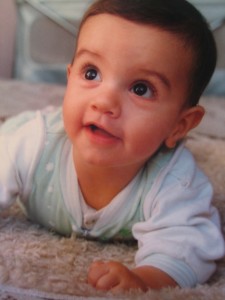World News
Early exposure to dirt, bacteria may protect babies from wheezing
WASHINGTON — Children exposed to pet dander, roach allergens and a wide variety of household bacteria in the first year of life are less likely to develop allergies, wheezing and asthma, U.S. researchers said Friday.
Previous research has shown that children who grew up on farms have lower allergy and asthma rates. Other studies, however, have found increased asthma risk among inner-city dwellers exposed to high levels of roach and mouse allergens and pollutants.
In the new study, researchers from the Johns Hopkins University and other institutions found that early exposure to bacteria and certain allergens may have a protective effect by shaping children’s immune responses.
The study, published in the Journal of Allergy and Clinical Immunology, was conducted among 467 inner-city newborns from Baltimore, Boston, New York and St. Louis whose health was tracked over three years.
The researchers visited homes to measure the levels and types of allergens present in the infants’ surroundings and tested them for allergies and wheezing via periodic blood and skin-prick tests, physical exams and parental surveys. In addition, the researchers collected and analyzed the bacterial content of dust collected from the homes of 104 of the 467 infants in the study.
The study showed that babies who grew up in homes with mouse and cat dander and cockroach droppings in the first year of life had lower rates of wheezing at age 3, compared with children not exposed to these allergens soon after birth.
The protective effect, moreover, was additive with infants exposed to all three allergens having lower risk than those exposed to one, two or none of the allergens, the researchers found.
Specifically, wheezing was three times as common among children who grew up without exposure to such allergens, compared with children who spent their first year of life in houses where all three allergens were present.
In addition, infants in homes with a greater variety of bacteria were less likely to develop environmental allergies and wheezing at age 3.
Further analysis of the effects of cumulative exposure to both bacteria and mouse, cockroach and cat allergens showed that children free of wheezing and allergies at age 3 had grown up with the highest levels of household allergens and were the most likely to live in houses with the richest array of bacterial species.
Some 41 percent of allergy-free and wheeze-free children had grown up in such allergen and bacteria-rich homes. By contrast, only 8 percent of children who suffered from both allergy and wheezing had been exposed to these substances in their first year of life, the researchers said.
Importantly, the protective effects of both allergen and bacterial exposure were not seen if a child’s first encounter with these substances occurred after age 1, they said.
“Our study shows that the timing of initial exposure may be critical,” said study author Robert Wood, chief of the Division of Allergy and Immunology at the Johns Hopkins Children’s Center.
“What this tells us is that not only are many of our immune responses shaped in the first year of life, but also that certain bacteria and allergens play an important role in stimulating and training the immune system to behave a certain way.”






















